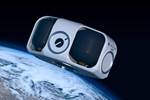ESA approves Windform RS, LX 3.0 for space flight applications
CRP Technology’s Top-Line composite materials Windform RS and Windform LX 3.0 are compliant with outgassing requirements in accordance with ESA-TEC-PR-002015.
Photo Credit: Getty Images
CRP Technology’s (Modena, Italy) Windform materials have reached a new, important milestone, increasing the number of composite materials officially approved for space flight. Carbon fiber-reinforced and glass fiber-reinforced have passed European Space Agency (ESA) standard screening outgassing tests in accordance with ESA-TEC-PR-002015 (based on ECSS-Q-ST-70-02C). This means that they are officially suitable for the construction of applications to launch into space.
“Passing the outgassing tests is a crucial factor for those who supply materials to the space industry,” Franco Cevolini, CEO and technical director of CRP Technology, says. “The majority of Windform Top-Line composites are already approved for space applications, and now that two more Windform are officially compliant with ESA outgassing requirements, we are more competitive and ready to offer further added value to our most demanding customers.”
The test was conducted in the μVCM facility of the TEC-QEE laboratory at ESA’s ESTEC technical center in Noordwijk, the Netherlands. The materials join (passed both ESA and NASA standard screening outgassing tests), and (passed NASA standard screening outgassing tests).
Related Content
-
NASA launches composite solar sail into space
Sunlight-based propulsion system, supported by carbon fiber-reinforced booms, will undergo weeks-long testing to demonstrate and verify its capabilities.
-
Expanding high-temperature composites in India and the U.S.
Azista USA offers polymers and processes for carbon/carbon and other CMC, including novel hot-melt phenolic and phthalonitrile prepregs for faster cycle times, alternative solutions.
-
Composites end markets: New space (2025)
Composite materials — with their unmatched strength-to-weight ratio, durability in extreme environments and design versatility — are at the heart of innovations in satellites, propulsion systems and lunar exploration vehicles, propelling the space economy toward a $1.8 trillion future.



